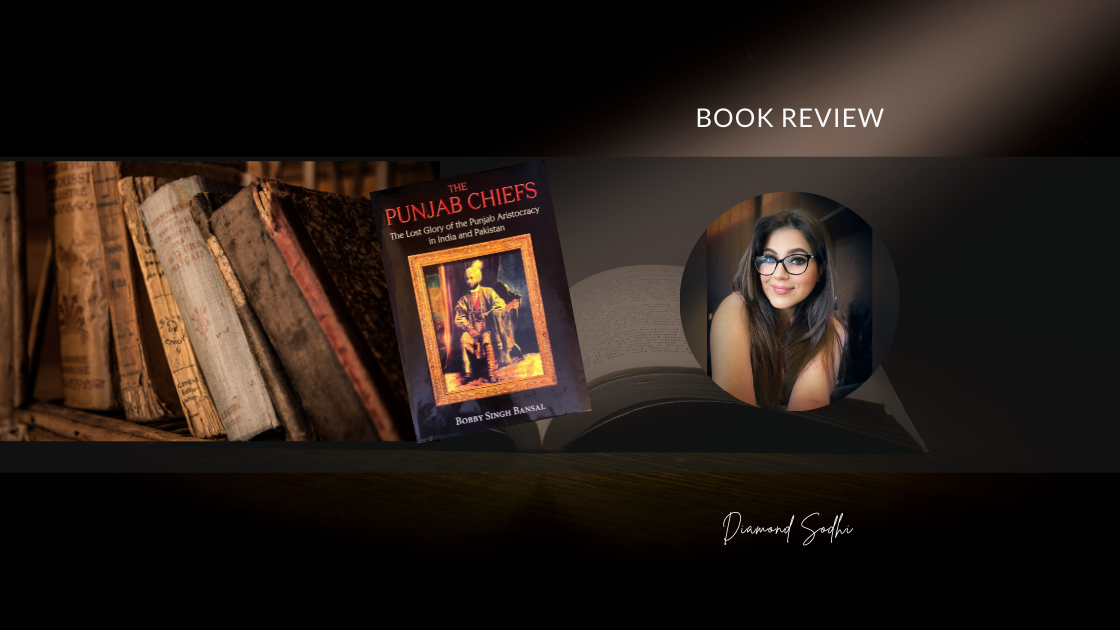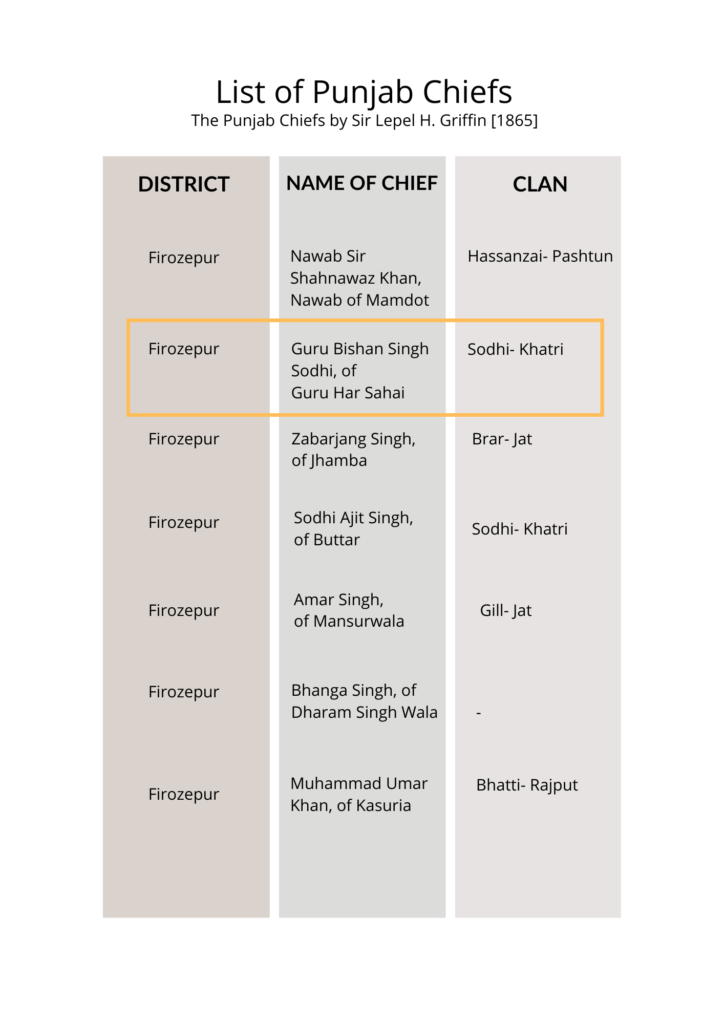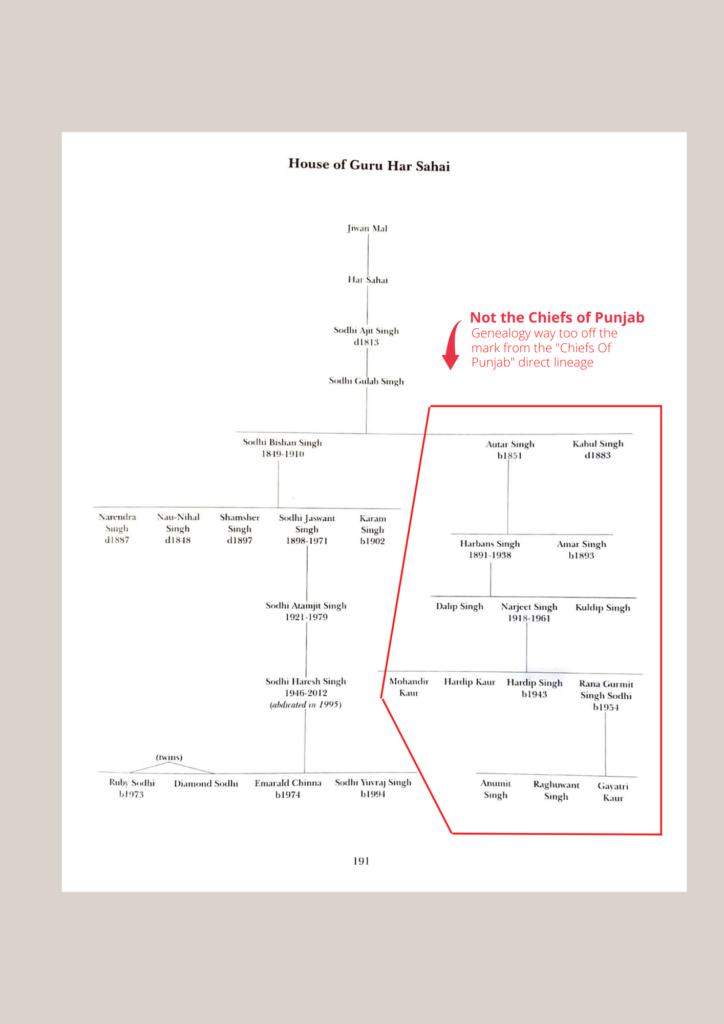
Although I did not have the privilege to be at the launch of the Book by Bobby Singh Bansal at the Golf Club in Chandigarh on April 6, 2022, I have been fortunate enough to find a copy in my little town bookstore. The Aristocracy of Maharaja Ranjit Singh weighed heavy for a coffee table book and came wrapped in a cellophane paper to uncover the author’s version for a whopping price of INR 6000. Clearly, the author was aware of his slender audience and the book was not written for the appetite of a common man.
Writing non-fiction is an arduous task, having been a student of non-fiction creative writing at Stanford University, I can vouch for that. Bobby Singh Bansal has authored a book named ‘The Punjab Chiefs- The Lost Glory of the Punjab Aristocracy in India and Pakistan”. The author aspired to update the work of Griffin and Massey who documented the Chiefs of Punjab in the versions 1890 and 1909. About 65 families of the then Chiefs of Maharaja Ranjit Singh found their way in his book, but with a sad disappointment.
I will keep my Book review limited to the chapter “House of Guruharsahai” as I am not historically acquainted or academically qualified on the subject matter to follow the author’s leaps of logic.
Let me begin by borrowing a paragraph from Bobby Singh Bansal’s Introduction page that reads as follows:
“Although Grifith’s edition was the inspiration behind thus updated version, several families of note were vociferously. Cynical, if not skeptical, by Griffin distortion of the ancestors’ biographies. So, I have endeavored to correct and amend any inaccuracies in the 1865 edition, especially the pedigree tables which have been identified. Historical misinterpretations have accordingly been rectified for this new edition. Families were consulted to avoid the repetition of inaccuracies and the biographies of all the families concerned have now been corrected wherever possible.“
While the author attempted to fill in the gaps, the book seemed to be a hastened putting together of facts and untruth with a disconnect. Many names were incorrectly recorded and some families such as the ‘House of Chhina” were not even reached out to. Even worse, Griffin & Massey’s work was far more thorough and updated a century ago as the author removed the last two generations included in the previous editions. Since my younger sister Emerald Chhina is married in the ‘House of Chhina’ I am privy to this information.
I am quite intrigued by the author’s initial remarks “Certain families have been omitted in this edition simply because they are no longer important in rank or influence today.” What could he possibly mean to imply- was he cherry-picking the Chiefs based upon whether they were meritorious enough to be a part of his glorious narration of the Chiefs of Punjab today? I would expect the book to be a true to life account of where the Chiefs of Punjab stand today, even if that meant documenting the fall of a Prince to penury.
While most of the accounts presented by the author in the ‘House of Guru Har Sahai’ chapter were a recapitulation of the work of Lepel Griffin, the rest of the content was an awkward assortment of what I think of as “Copy-and-Paste” of the notes supplied by one member of the house, and no further consultations being taken up to form a heterogenous summary.
What strikes as seemingly odd is the very inclusion of the descendants of Sodhi Autar Singh in the book reserved for the updated information on the Chiefs of Punjab. Guru Bishan Singh and later Guru Jaswant Singh, were the only Chiefs of Punjab along with the following from the Ferozepur District noted in the historical archives.

While the lineage of Guru Bishan Singh is traced down to the present family, a parallel genealogy for the descents of Sodhi Autar Singh gets a piggyback ride by the author and lands them in the place of the first cousins of the Guru Bishan Singh’s descendants. Detailed accounts of Rana Gurmeet Singh Sodhi [descendent of Sodhi Autar Singh] laud him for his political and sport related accomplishments. But this is all so out of place within the context of the Chiefs of Punjab. The descendants of the Chiefs of Punjab imply the downline of Guru Bishan Singh and not his brothers and their downline.
The author tries to elevate Rana Gurmeet Sodhi’s position from a random person belonging to the family of Chiefs of Punjab [since he is a distant relative] to positioning him where he does not belong. As history puts it [refer to the family tree below presented by the author], Guru Bishan Singh had gifted half of his property to his second younger brother, Sodhi Autar Singh [ four generations up from the current family of Ex Chiefs].

His gift, however, was for his lifetime which was never rightfully returned to Guru Bishan Singh Sodhi and his descendants. Why that was never done or who is the rightful claimant of that property today is not the moot point here. Why the author chose an affluent politician from the Sodhi family whose ancestors were never on the records of the Chiefs of Punjab is the question here. Was the author trying to immortalise Rana Gurmeet Sodhi in the pages of his book and lend Rana Gurmeet Singh Sodhi an unsubstantiated and misappropriate validation as one of the Chiefs of Punjab? The author’s account written for ‘The House of Guru Har Sahai” contrasted the credibility he was trying to create by ushering in the family of Rana Gurmeet Singh Sodhi [Great-Grandson of Sodhi Autar Singh, who was not one of the Chiefs of Punjab].
In his endeavor to tighten around his original idea Bobby Singh Bansal strayed around in putting forward the correct information and filling in the gaps with truthful narrations. The write-up on Guru Har Sahai lacked a clear chapter structure with details on Guru Atamjit Singh Sodhi being omitted and two and a half pages being dedicated to a politician far away from the mainstream family. The ‘House of Guru Har Sahai’ was not a persuasive representation of facts. To the question asked by the author that he hoped he had done justice to the family, my answer would be a downhearted “No”.
